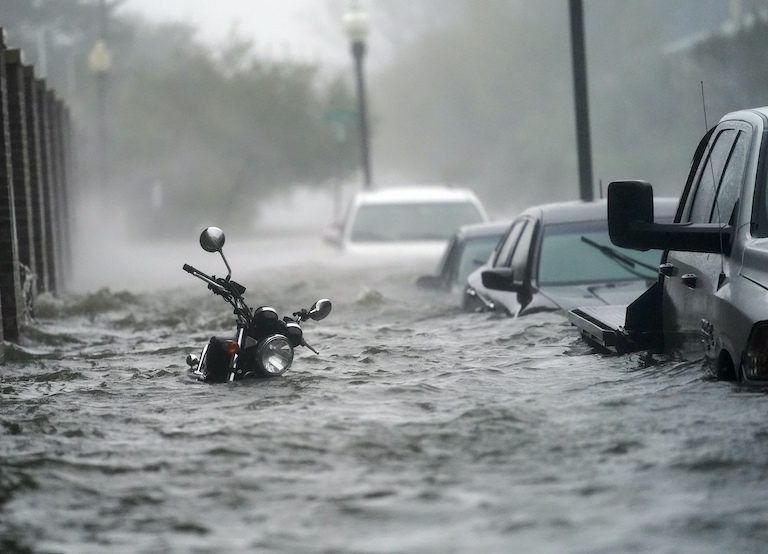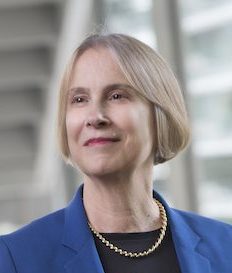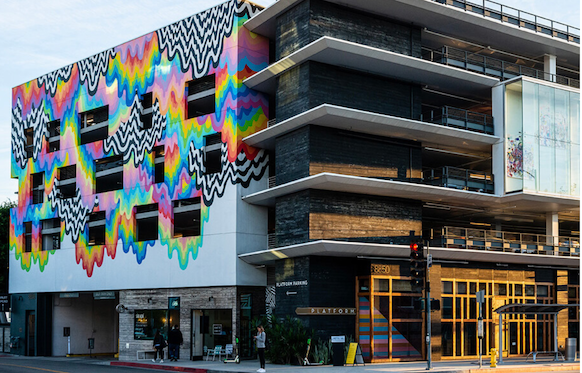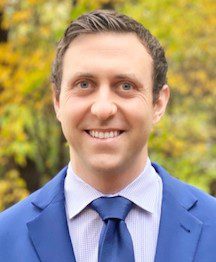
The first thing real estate professor Nancy Wallace asked her students to think about last semester was rain.
“Pick a city like Miami,” said Wallace, chair of the Real Estate Group at Haas. “When it rains in Miami, the sewage treatment plants flood, the water mains back up, and the streets are flooded. The same with Houston. We’re not talking about a hurricane, which would be 10 times worse—just a regular very rainy day. Because the infrastructure in these cities is below sea level, the risk is just huge.”

And with that intro, students in Wallace’s Real Estate Investment and Sustainability class began to consider the risks for cities that are fundamentally unequipped and slow to adapt to the impacts of climate change.
From flooding to wildfires to rising temperatures and other extreme weather events, climate impacts have rapidly moved from the theoretical future to the most pressing challenges facing the real estate industry today. Wallace, co-chair of the Fisher Center for Real Estate and Urban Economics at Berkeley Haas, has responded by reshaping the real estate curriculum to focus on sustainability.
“The classes, our research, and everything that we now do will be taught through a lens of sustainability,” said Wallace, the Lisle and Roslyn Payne Chair in Real Estate and Capital Markets. “We’re addressing how climate change impacts all parts of the industry—from development and building to mortgages and mortgage-related securities to the insurance markets.”
Course changes
The Fisher Center’s real estate program provides both academic and interdisciplinary training in real estate investment, real estate law, and the role of real estate development in the built environment. MBA students, along with students in the College of Environmental Design and Berkeley Law, can earn the Center’s Interdisciplinary Graduate Certificate in Real Estate (IGCRE).
Recent curriculum changes impacted two core real estate courses: Real Estate Investment and Sustainability, and Real Estate Finance and Securitization.
Project work in both classes centers on developments in cities, which occupy 2% of the world’s land mass but consume two-thirds of the world’s energy and account for 70% of carbon dioxide emissions, according to C40, a network of the world’s megacities addressing climate change. What’s more, most of the world’s urban areas are on coastlines that are at risk from rising sea levels and coastal storms.
Project work in both classes centers on developments in cities, which occupy 2% of the world’s land mass but consume two-thirds of the world’s energy.
“It’s so important that Haas is making this shift to help students approach these problems and move to solve them from the sustainability side,” said Michele de Nevers, executive director of Sustainability Programs at Haas.

The Real Estate Investment and Sustainability class, which Wallace co-taught with architect Edward McFarlan, examines the challenges and opportunities in creating the next-generation city, including rethinking density, transit, mobility, infrastructure, and equity.
Last spring, students worked on final team projects centered on sustainable redevelopment of two Bay Area sites: the Stonestown Mall in San Francisco, owned by Brookfield Properties; and the Bayfair Mall in San Leandro, owned by Madison Marquette.
Students assumed that both sites could be redeveloped with a “blank slate” approach, and their charge was to convert both sites to a mixed-use development with affordable housing and live-work-shop components.
The Bayfair Project, outlined in a class project book Wallace compiled called “Building the Sustainable City,” included ground floor retail, a solar canopy over the garage, a shared electric vehicle program, and EV charging. Students also recommended installing puzzle lifts, a semi-automatic parking system that moves cars both vertically and horizontally to create more parking space.
Looking back, Kyle Raines, MBA 21, said the project made him understand how ESG and sustainability extend to the community around a project and can help a project thrive in the long term. “Not only will it get good press, but it will help develop land around the project and create momentum,” he said.

What Raines learned in the class also helped him pitch investors when he was starting Crown Point, a real estate private equity fund. “The thing I think that most struck me from the class is how much investors care about ESG and sustainability—how creating that sense of community at that property is not only a competitive advantage, but also the right thing to do,” he said.
Angus Maguire, MBA 21, said the Bayfair Project helped him better understand the real estate industry and apply what he’d learned in class from the many industry speakers.
“I took the course because I knew I would be working with real estate developers or real estate asset owners sometime in the future in my renewable energy career, so wanted to better understand how they think about project economics,” he said.
Real-world research
In the Real Estate Finance and Securitization course, Wallace, who is teaching the class this semester, draws from real-world research and the students explore real estate market data in depth.
Sabin Ray, MBA 22, said one highlight was learning about Berkeley Law’s recent findings on the City of Berkeley’s well-intentioned Property Assessed Clean Energy Program. The program allowed property owners to borrow money for renewable energy systems or energy efficiency improvements, and make payments through a special assessment to their property tax bills. But the research found that the program raised the property taxes of low-income residents, while underdelivering the promised green benefits.
For their final projects, students in the class will be able to access the electronic S&P Global database through a subscription that the Fisher Center subsidized. The database includes balance sheet, performance, and corporate Environmental, Social, and Corporate Governance (ESG) strategies. Students tap the data to analyze current ESG strategies in the Real Estate Investment Trust (REIT) industry.
“The purpose of the Fisher Center subsidy is to provide MBA students with very granular firm-level data that connects the dots between performance and sustainability strategies within real estate operating companies,” Wallace said.
Ray said the sustainability focus of the course appealed to her and that the project finance work will help her as she pursues an impact investing career. “A lot of things we are learning in class I can apply to other areas of financing,” she said.